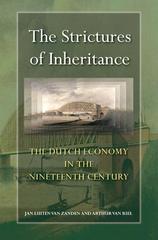Question
1. Effective collective bargaining will: a) raise the wage of union workers b) increase the demand for union workers c) none of the options d)
1. Effective collective bargaining will:
a) raise the wage of union workers
b) increase the demand for union workers
c) none of the options
d) decrease the supply of labour in the non-unionised parts of the economy
2. Wages at a rate greater than the minimum level can:
a) create productivity gains if managed correctly
b)encourage higher quality candidates to apply for positions
c) encourage a labour surplus
d) all of the options
3. Sally has just graduated with an aeronautical engineering degree and has struggled to find work because of aeronautical jobs has just recently moved overseas. She decides that she needs to remain competitive in the market and has enrolled in a business degree part-time. The category of unemployment that Sally falls under is:
a) Frictional unemployment
b) Structural unemployment
c) Wage-induced unemployment
d) Demand-deficient unemployment
4. Mary has been out of the paid workforce in order to raise her children. Now she decides to do paid work and is looking for a job.
This means that the number of unemployed (i) and the labour force (ii).
(i)
a) increases
b) there is not enough information to say
c) decreases
d) is unchanged
(ii)
a) increases
b) is unchanged
c) there is not enough information to say
d) decreases
5. Suppose that the adult population consists of 19.04 million, those not in the labour force are 7.56 million and the number of unemployed is 0.88 million. Prior to the calculation of these figures, 0.1 million people dropped out of the labour force as they were unable to find suitable work. What is the total number of employed? Write the answer in millions, and round it to 1 decimal place.
6. Which of the following variables is not a real variable?
a) The amount of corn
b) The dollar wage
c) The price of bananas relative to the price of oranges
d) The nominal interest rate adjusted for inflation
7. In which situation is the real interest rate lowest?
a) The nominal interest rate is 11% and the inflation rate 9%.
b) The nominal interest rate is 25% and the inflation rate 30%.
c) The nominal interest rate is 2% and the inflation rate 1%.
d) The nominal interest rate is 8% and the inflation rate 5%.
8. Masako buys a house in 1999. She obtains a mortgage that carries an annual interest rate of 12 per cent, and makes payments of $880 per month. The CPI in 1999 is 100, in 2000 it is 110, and in 2001 it is 120. What is the real interest rate in 2001?
a) 9 per cent
b) 3 per cent
c) 4 per cent
d) 21 per cent
Step by Step Solution
There are 3 Steps involved in it
Step: 1

Get Instant Access to Expert-Tailored Solutions
See step-by-step solutions with expert insights and AI powered tools for academic success
Step: 2

Step: 3

Ace Your Homework with AI
Get the answers you need in no time with our AI-driven, step-by-step assistance
Get Started


